4. Paradise Pier
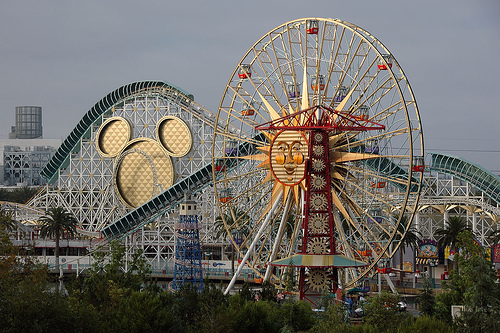
The final land in the park is surely the most ambitious. Paradise Pier was meant to recreate the “heyday” of seaside boardwalk amusement parks. As to when, exactly, that was…? Well, any thoughtful reflection on the land makes that very hard to determine…
Some rides within Paradise Pier recall turn-of-the-century amusements; some are unapologetic, unwrapped modern thrill rides that didn’t exist until the 1990s. Still others are stylistically rooted in the ’40s, the ’70s, the 2000s… That’s okay in the sense that real amusement piers are also typically composites of parts from the last century all mashed together in waterfront cacophonies of stucco walls, steel rides, striped awnings, modern music, and fast food… but is it what you expect for paying Disneyland prices?
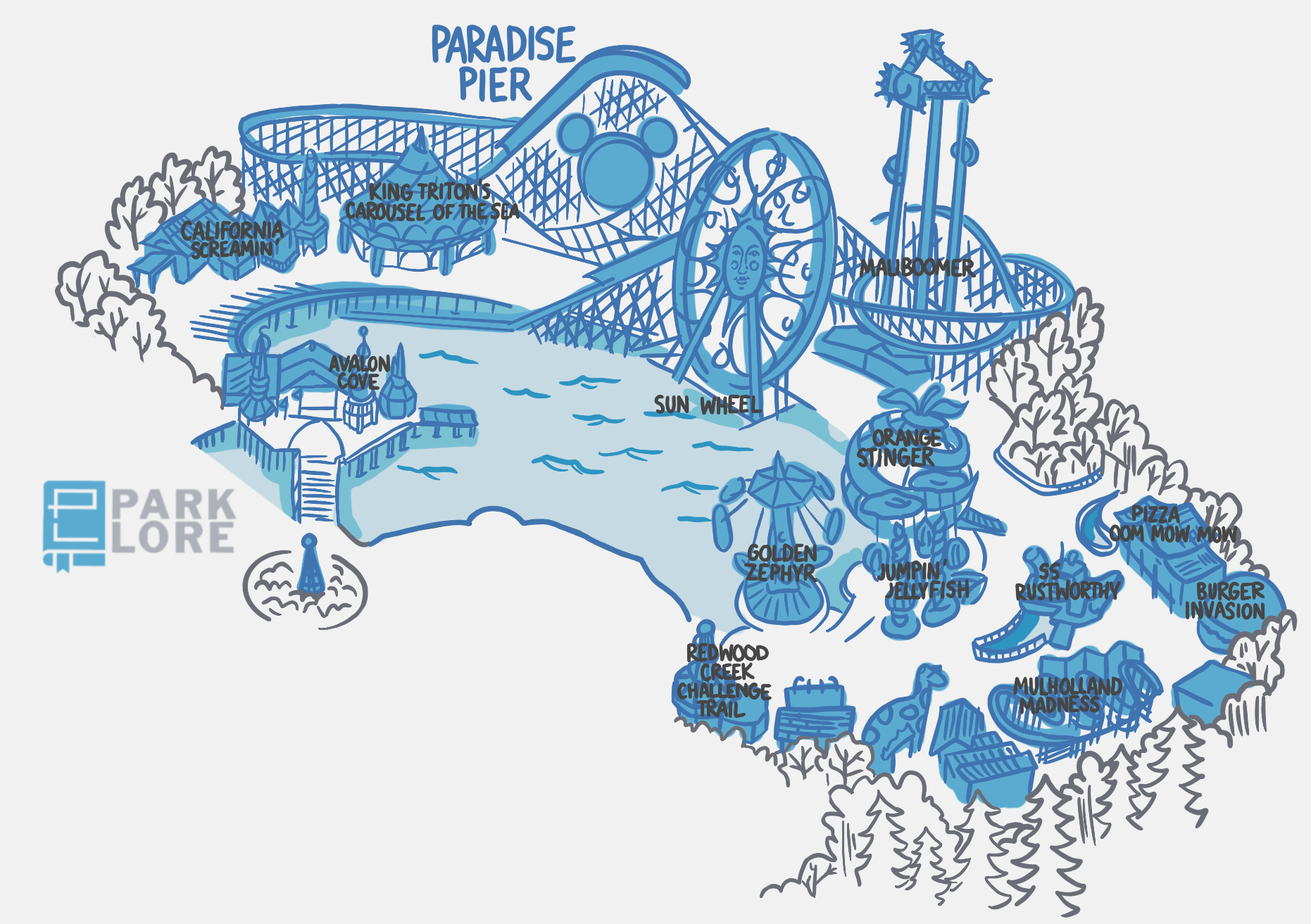
A trip around Paradise Pier begins at the Golden Zephyr, a classic, historic spinning ride that once could’ve been found at seaside boardwalks across the country. Riders sit in glistening, metallic blimps that swing out over the water as they revolve. For a second, you might even imagine you’ve traveled back in time to a turn-of-the-century pleasure pier, that certain way that only Disney Imagineering can do…
Of course, its neighbor, the Orange Stinger swings, will quickly break you out of that illusion. On paper, the Orange Stinger is a spinning aerial “yo-yo swings” – an amusement park classic! But the Orange Stinger doesn’t continue the historic, reverent, idealized, and “Disney” style celebration of a long-gone golden age that Golden Zephyr might’ve hinted at. Instead, the Orange Stinger’s classic swing ride is wrapped inside of a giant, modern, neon-lit orange peel, with the swings painted like honeybees. It’s cute in its way; but the postmodern allusion to the land’s original use (orange groves) is distinctly of today.
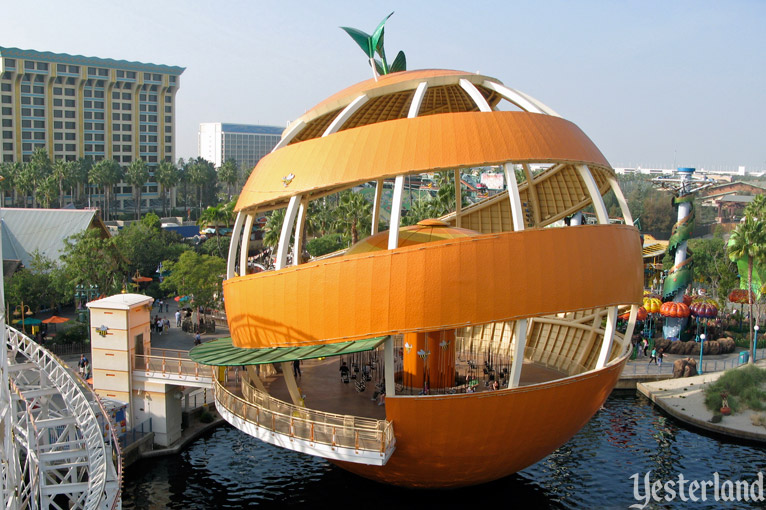
One of Disneyland’s many innovations was its “berm” – the protective, tree-lined raised earthen barrier that shields the park from views of the outside world. That’s not a problem for a more “modern,” “real,” “MTV attitude” park like California Adventure, though. For example, that ’80s style hotel looming behind Paradise Pier is all part of the fun. It looks like the kind of “refrigerator box” convention hotel that would pop up around an amusement park… because it is.
In fact, Disney’s Paradise Pier Hotel existed long before Paradise Pier. When it opened in 1984, the Emerald Hotel of Anaheim provided great views of Disneyland’s parking lot. Disney purchased the hotel from its owners in 1995 (part of the company’s land acquisitions for the resort’s build-out), renaming it Disney’s Pacific Hotel. It became Disney’s Paradise Pier Hotel in December 2000 – two months before it would provide views into the completed Paradise Pier… and when guests in Paradise Pier would get views of the hotel.
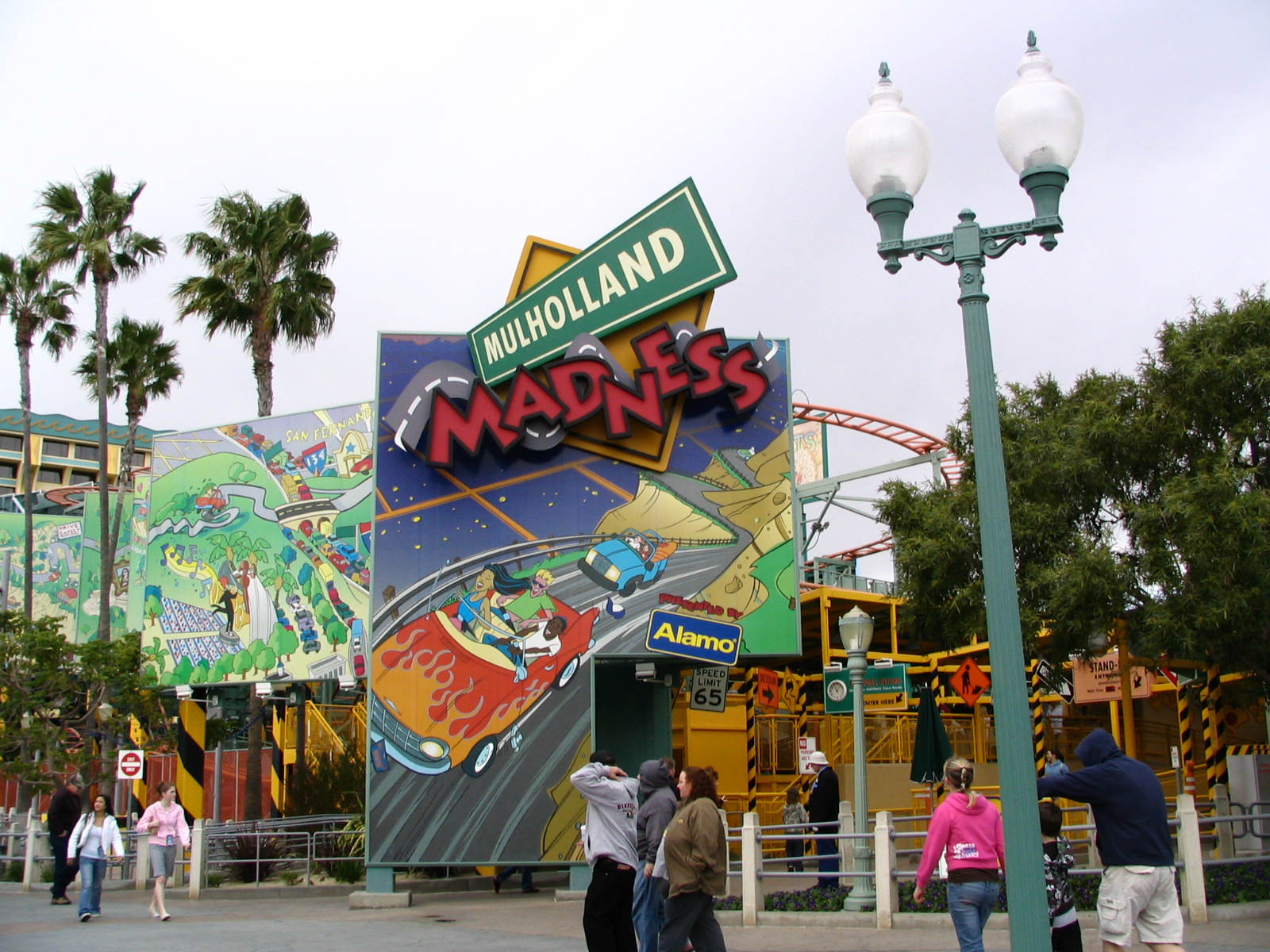
That trend continues with Mulholland Madness, an off-the-shelf wild mouse roller coaster common at traveling fairs that casts you as a driver zipping back and forth along the streets of Hollywood’s infamously-curved Mulholland Drive, all hidden away behind a cartoon, comic-book-style foldout map. What’s that? You say that Mulholland Madness looks like something from a carnival? That it’s not something you’d expect at Disneyland? That you – as a tourist – don’t know what Mulholland Drive is and don’t get the “joke”? Oh… Hmm…
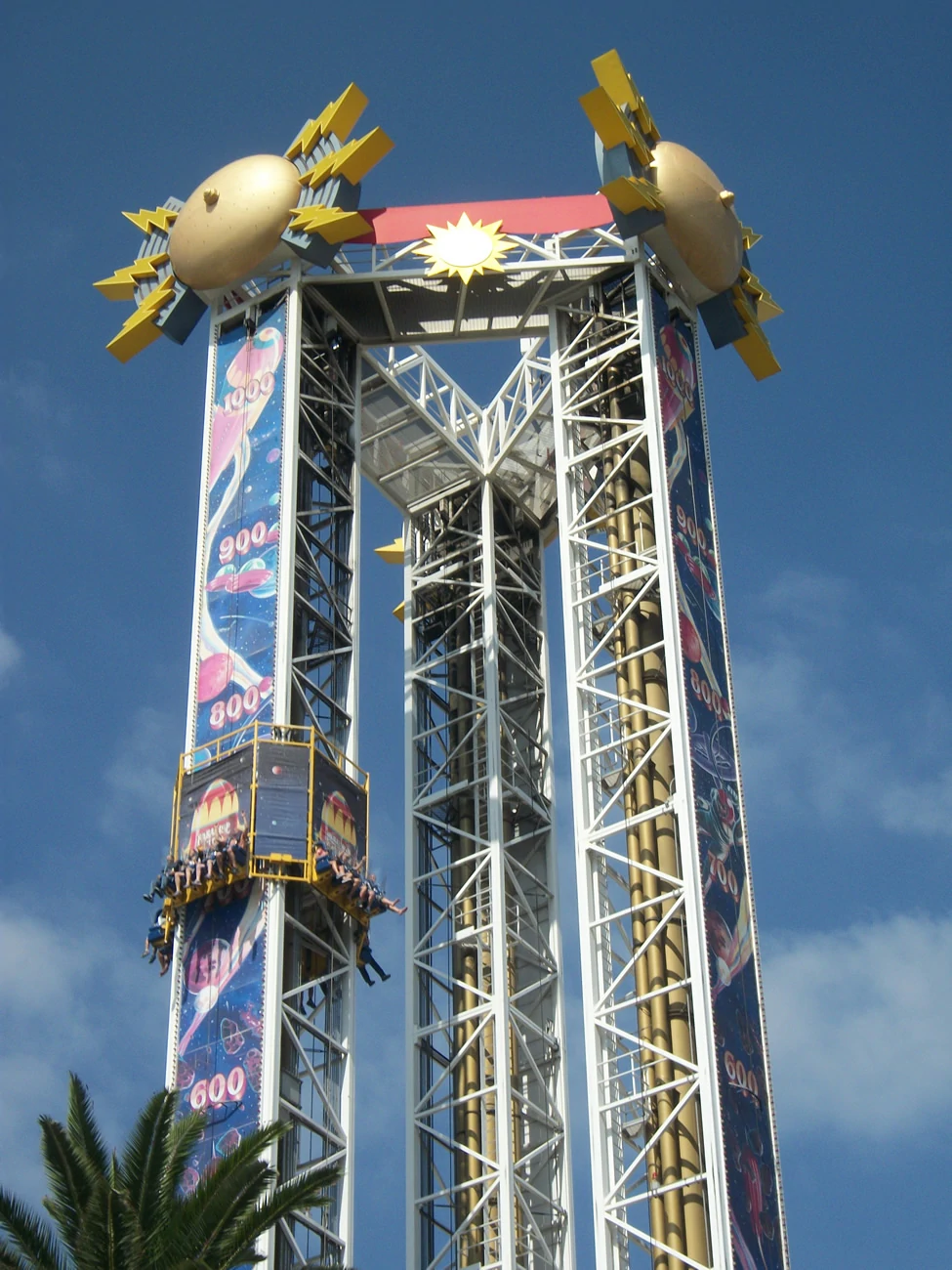
Beyond, you’ll find Maliboomer. It’s an S&S Space Shot tower. If it looks familiar, it’s probably because a taller version already exists at your local theme park, including Knott’s Berry Farm just a few miles up the road. (Disneyland’s picky neighbors have also necessitated a fun addition: plastic “scream shields” that pull down over each seat. Your first scream will probably be your last, as the shields meant to deafen noise will also deafen you if you dare scream during the ride.)
From its modern, steel structure with bright yellow pneumatic tubes to its highly stylized “bell-ringing” marquee at the tower’s top meant to “theme” the ride as a carnival’s bell-striking strength game, nothing about the Maliboomer looks particularly historic, and its very presence rising above the boardwalk pretty quickly obliterates any sense that we’ve traveled back in time. Nope – the time is now and the place is here, and any allusions to historic rides must be leftovers of a bygone era awaiting a modern overhaul.

That maybe explains Jumpin’ Jellyfish. It’s technically a parachute drop ride – common at historic amusement piers – but its cartoonish kelp and seaweed wrap and its name recall (yet don’t explicitly tie to) Disney’s 1989 animated film The Little Mermaid.
If you’re trying to carbon date Paradise Pier or figure out its layered, invented “history,” that would probably either insinuate that a historic parachute drop that existed on Paradise Pier for decades was re-wrapped closer to present day, or that the park’s anonymous modern operator simply purchased a sea-themed version of the ride from a catalogue.

Similarly, next-door is the Sun Wheel, a uniquely thrilling model of Ferris wheel (based on the swinging, sliding, and swaying Deno’s Wonder Wheel at New York’s historic Coney Island) whose stylized, bronze sun face is clearly meant to date the ride to the ’60s and ’70s.
It’s true that surviving coastal boardwalks are a mix of history and nostalgia; differing styles, competing vendors, visual clashes and contradictions, in-your-face advertisements, skeezy carnival games, and off-the-shelf thrill rides… but that’s not what people expect of Disneyland. It would’ve been nice if all of Paradise Pier’s rides shared a common style – whether that be as historic, authentic seaside amusements or wrapped in saturated colors and modern cartoon embellishments. The mishmash comes across as messy, not layered.
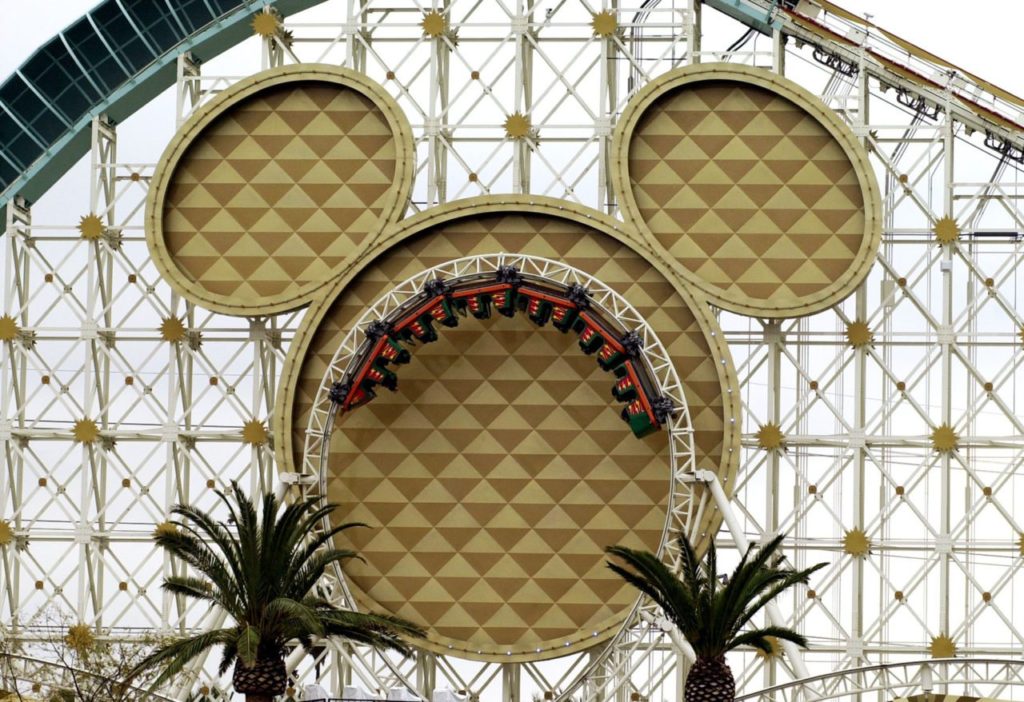
Without a doubt, the land’s highlight (and the park’s visual backdrop) is California Screamin’ – arguably, the second of two E-Tickets at the park (alongside only Soarin’). Though it looks like a historic wooden coaster – the centerpiece of many seaside boardwalks – it’s actually a cutting-edge steel roller coaster with a linear induction motor launch, accelerating guests from 0 – 55 miles per hour in seconds. It also features on-board audio by Gary Hoey and George Wilkins, scrambling together their rock ‘n’ roll music and classic carnival calliope tunes, synchronized to the ride.
Still, California Screamin’s most iconic element must be its single vertical loop, perfectly positioned before a golden Mickey Mouse inset – actually, the first appearance of Mickey 0r any Disney character on a ride at California Adventure! California Screamin doesn’t exactly insulate the park from the outside world, but it does serve as a nice visual backdrop to Paradise Pier, enveloping the land and giving shape to the curving boardwalk.

Also here in Paradise Pier, a plaza serves as an homage to the tacky roadside attractions of Route 66: a giant pink dinosaur-shaped kiosk selling sunglasses, the S.S. Rustworthy shipwrecked water play area; Burger Invasion!, a McDonald’s walk-up window dressed as a sci-fi giant hamburger spaceship; the hokey Pizza Oom Mow Mow bungalow decked out with surf boards and playing music from the Beach Boys.
As you might imagine, Paradise Pier’s identity is a bit confusing, and its story nonexistent. Half modern, half-retro, the land is decorated with “circus freak” style posters and flat, stucco exteriors adorned with glowing neon waves.
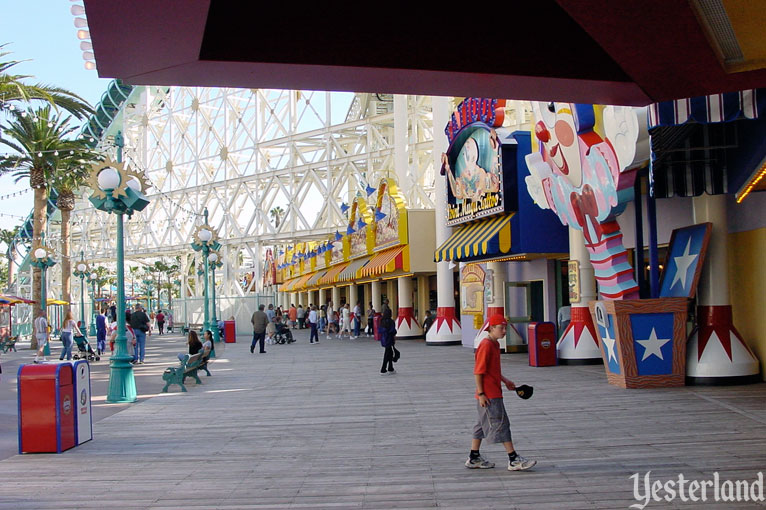
The endless row of stucco shops is also covered with striped circus-tent style awnings and simple marquees. Puns run rampant as always (Mali-Burritos as a Mexican restaurant, San Joaquin Volley as a boardwalk game, “It’s a Meatier Shower!” on a Burger Invasion billboard, etc.). Gift shops are dressed as tattoo parlors like you might really find along the boardwalk in Coney Island or the Santa Monica Pier.
So if you’re looking to analyze Paradise Pier through the same lens you’d use at Disneyland, then when and where might this land be set? The safest bet in establishing the “story” of Paradise Pier is that you’re simply visiting a real California boardwalk, today.
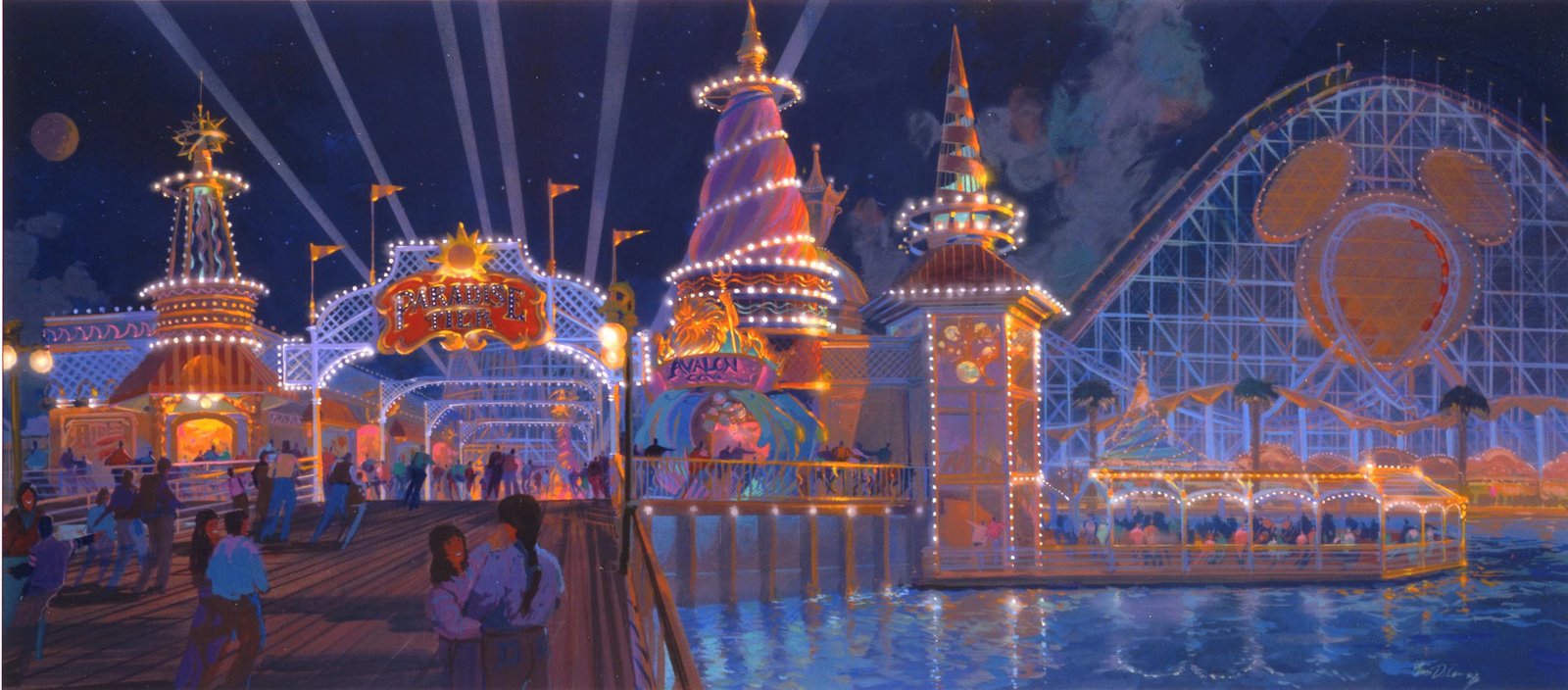
Of course, the irony did not escape fans that Walt Disney had spoken at length about how he created Disneyland specifically as an alternative to the dirty, gaudy boardwalks of the day. He was tired of the era’s amusement parks marked by competing vendors, ugly contradictions, and thrill rides that split children from parents. He wanted something different. So he built Disneyland. Then Disney turned around and built Paradise Pier… Oops.
Misadventure
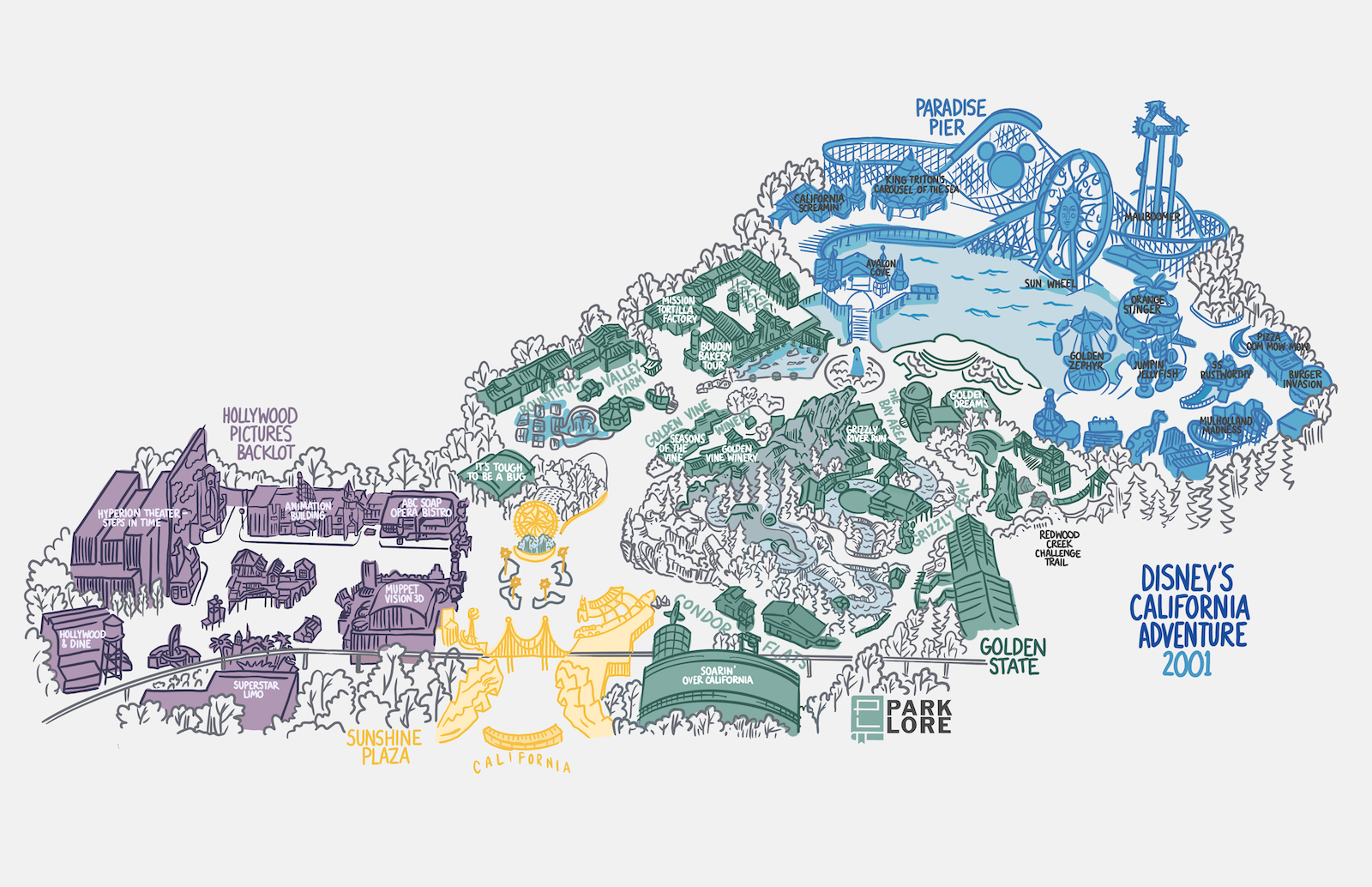
And if you can possibly believe it… that’s it! When Disney’s California Adventure opened in 2001, the park was made of just four “districts” (Sunshine Plaza, Hollywood Pictures Backlot, The Golden State, and Paradise Pier) which together contained only eleven rides – 7 “off-the-shelf” fair rides, 1 dark ride, and the starring trio of Soarin’, Grizzly River Run, and California Screamin’.
Make no mistake: Disney’s California Adventure was short on rides. It had almost nothing for families to do. There were no Disney characters to speak of. Its emphasis on food and retail over attractions was a major misjudgment. But frankly, none of that was as bad as California Adventure’s real issue.
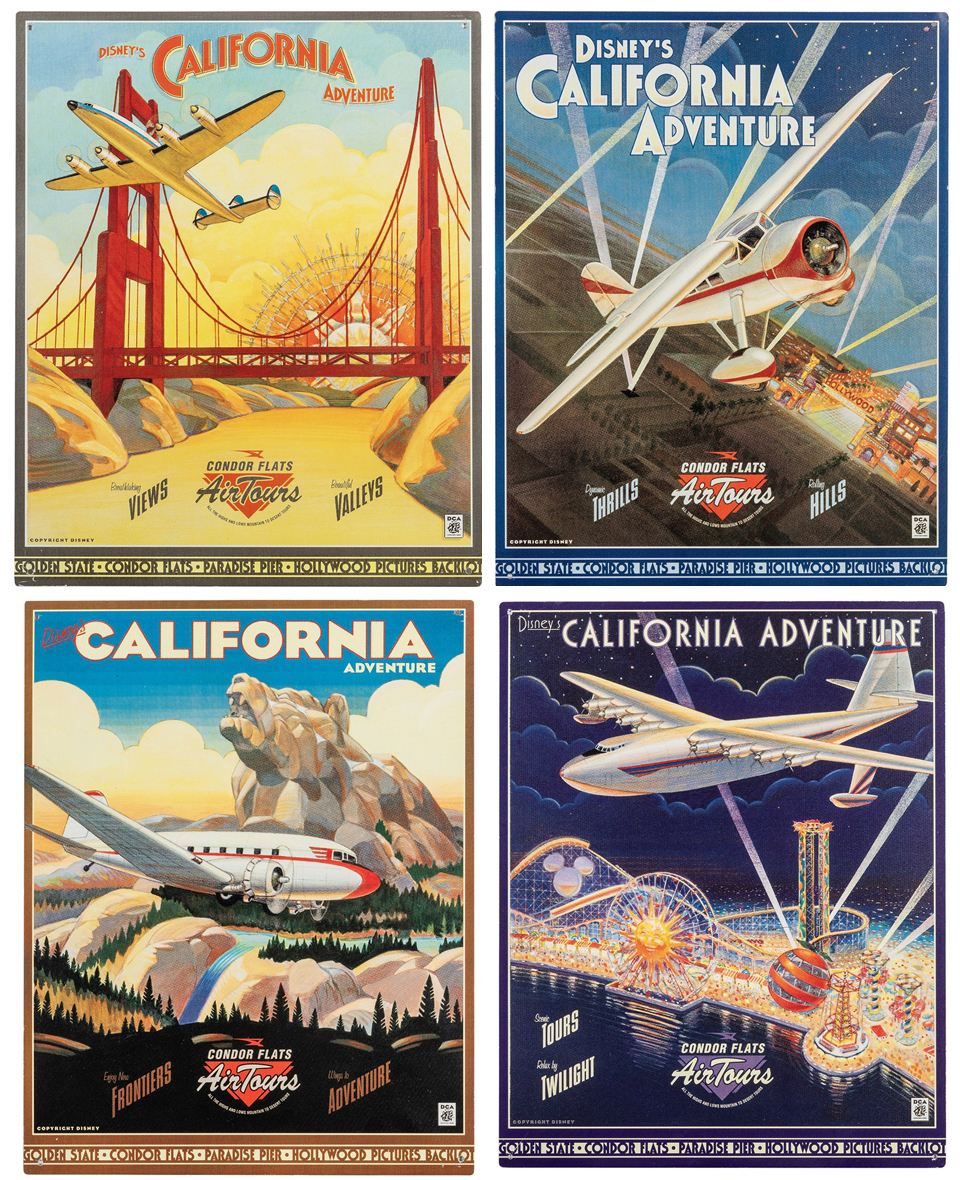
With just eleven rides (of which seven were carnival rides), Disney’s California Adventure would open with significantly less to see and do than Disneyland across the way. Even broadly defining “attractions” (to include non-ride asides like the Bakery Tour, three films, and Redwood Creek Challenge Trail), the new second gate boasted just 22 attractions versus Disneyland’s 63 the same year.
That might’ve been forgivable if, for example, California Adventure had been priced as a lower-cost add-on to a ticket to Disneyland operating only in the afternoons. Even if the new park had been open to the public for free with ride coupons required for the rides, at least guests could’ve enjoyed its restaurants. Instead, a day at California Adventure cost the same as a day at Disneyland – $43 for adults, and $33 for children.
Barry Braverman told Iwerks, “The way in which the two parks were offered up to the public probably could’ve been done in a way that would have given California Adventure [the time needed] to come along as a little brother of Disneyland and grow into a full-grown park. But we didn’t have that opportunity from some people in the press.”
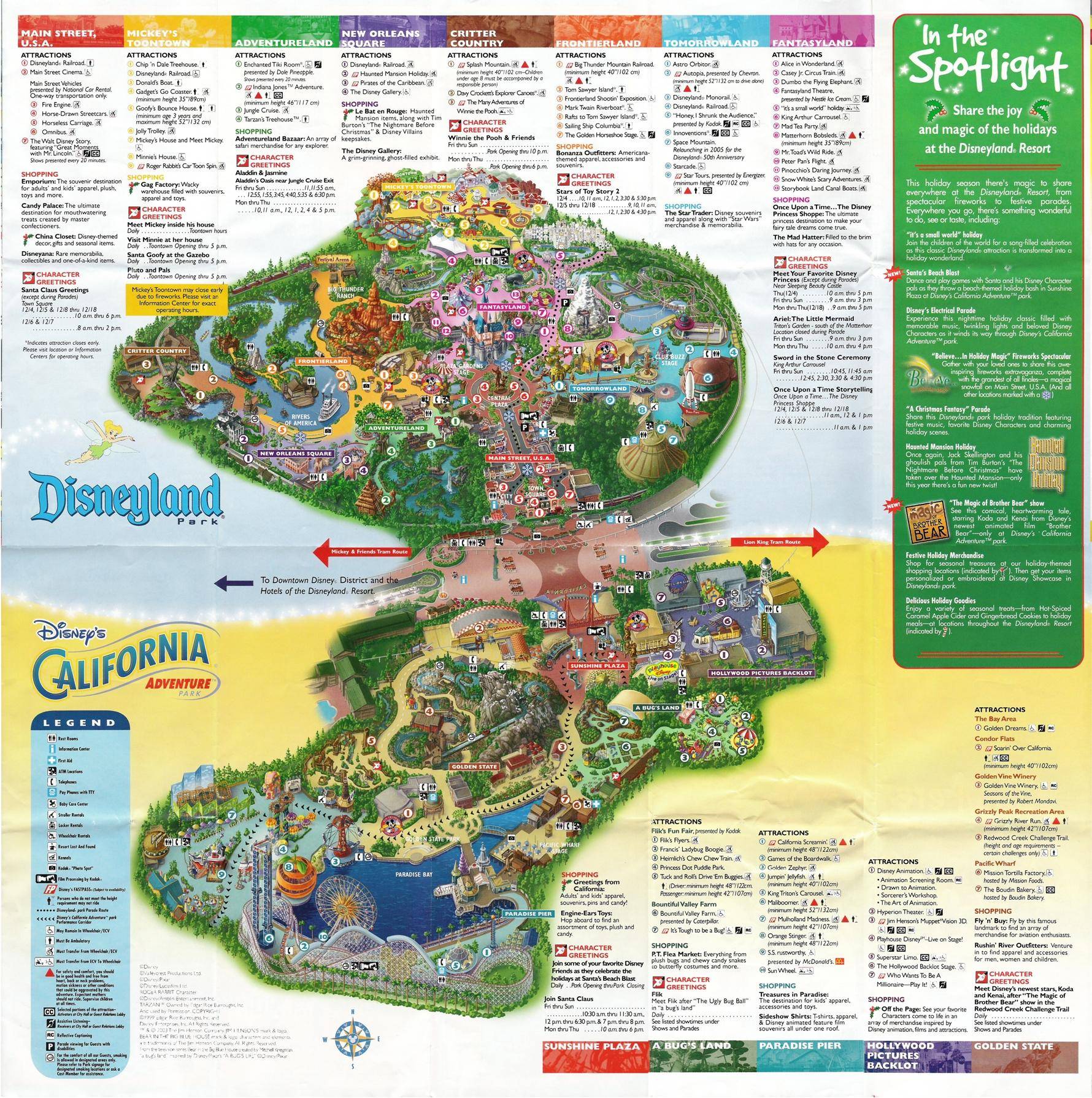
He was right. In a pre-opening review of the park, the Orange County Register summarized its review (“Sequel is no Equal“) of the new park with a damning and concise conclusion: “It’s a great park. It’s just not a great Disney park.”
John Lasseter – then a director at Pixar and (unbeknownst to him at that time) soon-to-be-Chief-Creative for all of Walt Disney Animation similarly recalled in The Imagineering Story, “There [were] some good things in the park. Soarin’ was phenomenal. Screamin’ was a great roller coaster. But it fundamentally didn’t work really as a Disney park. Because when you walk into Disneyland, you know you’re at a Disney park. When you walked into California Adventure, it felt like [you] could be anywhere. I kept walking around going, ‘Oh, no. This is–’ ‘Oh, they didn’t–.’ It’s like they didn’t want to spend any money on the place-making.”
In regard to the park, Imagineer Kim Irvine was direct. She recalled in The Imagineering Story, “You can’t fool people. You know, they can tell when things are being shortchanged or you’re not paying attention to the details and putting quality into something. Walt used to say, ‘If you do a good job, they’ll pay for it.’ And I think they started seeing that we weren’t doing that good of a job anymore.”
Beloved Imagineer and Disney Legend John Hench probably put it best when he reviewed the new park in one of the most concise reviews of Disney’s California Adventure: “I liked it better as a parking lot.” It was only the start…

